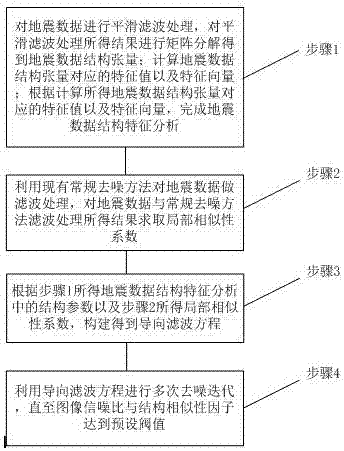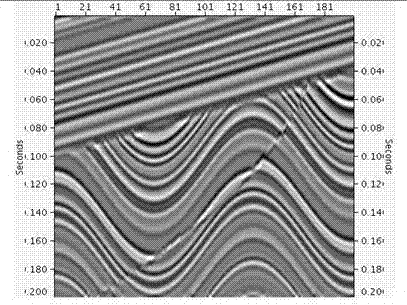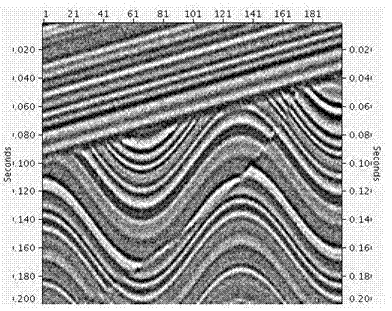Seismic data edge preserving smoothing method based on structural features
A technology of seismic data and structural characteristics, applied in seismology, seismic signal processing, geophysical measurement, etc., can solve the problems of unfavorable seismic data fidelity, ambiguity, and damage to the authenticity of seismic data.
- Summary
- Abstract
- Description
- Claims
- Application Information
AI Technical Summary
Problems solved by technology
Method used
Image
Examples
Embodiment Construction
[0023] The present invention provides an edge-preserving and de-noising method for seismic data based on structural features. The edge-preserving and de-noising method performs targeted sub-area de-noising processing according to the structural information of the seismic data and the similarity information of the pre-filtering process. While removing random noise, it effectively protects the boundary information of seismic data.
[0024] Embodiments of the present invention will be described in detail below in conjunction with the following drawings.
[0025] The present invention provides a method for edge preservation and denoising of seismic data based on structural features, such as figure 1 As shown, the edge-preserving and denoising method includes the following steps:
[0026] Step 1: Perform smoothing and filtering processing on the seismic data, and perform matrix decomposition on the results obtained from the smoothing and filtering processing to obtain the seismic ...
PUM
 Login to View More
Login to View More Abstract
Description
Claims
Application Information
 Login to View More
Login to View More - R&D
- Intellectual Property
- Life Sciences
- Materials
- Tech Scout
- Unparalleled Data Quality
- Higher Quality Content
- 60% Fewer Hallucinations
Browse by: Latest US Patents, China's latest patents, Technical Efficacy Thesaurus, Application Domain, Technology Topic, Popular Technical Reports.
© 2025 PatSnap. All rights reserved.Legal|Privacy policy|Modern Slavery Act Transparency Statement|Sitemap|About US| Contact US: help@patsnap.com



